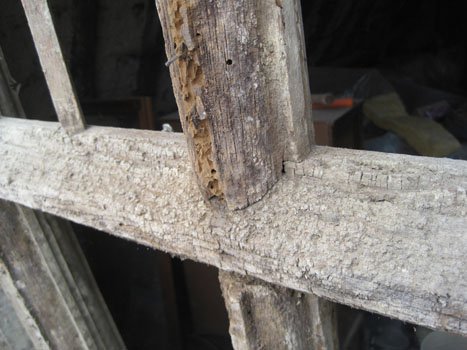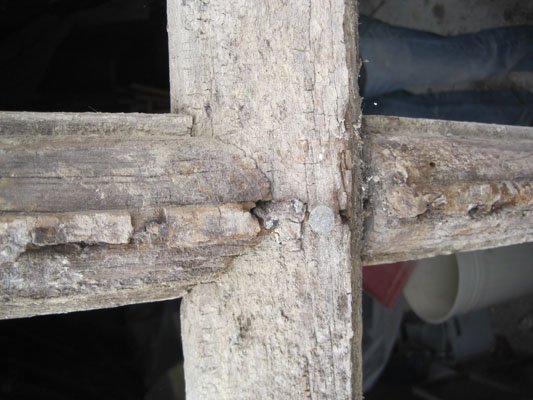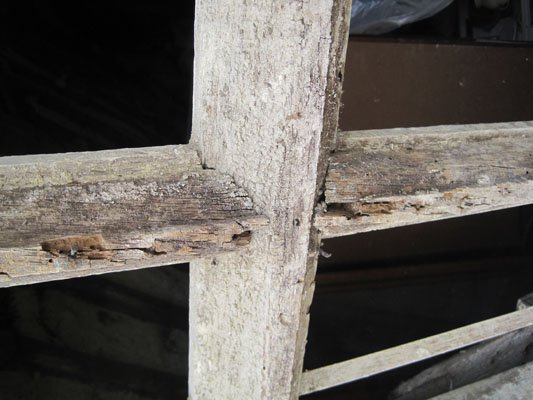Penners
Member
- Messages
- 17,294
- Location
- Suffolk, England
I've been helping friends to expose an original ogee mullion window in their timber-frame C17th house. The window has been imprisoned under concrete render for goodness-knows how long - I reckon more than 50 years, at the very least.
The oak members of the window are very well preserved internally, where they weren't covered with concrete. But externally they are badly rotted and have suffered from (now extinct) infestation by woodworm and DWB. Some of the finer parts of the mouldings are so delicate that they crumble to dust when they're lightly touched (see my pictures below).
The CO has given them permission to plant a new, secondary window-frame externally on the timber frame, to protect the old window. The glazing bars of the new frame will align with the old one, so as to minimise any visual change to it.
The CO doesn't want the old window to be hacked about with repairs (I and my friends completely agree with him). With regret we have to accept that some parts of the mouldings are beyond conservation, but these represent a minority of the window. We would rather conserve what remains of it in as good a condition as possible, leaving the rotted parts to speak for themselves - but to be stabilised as much as possible to prevent any further deterioration and, as I said, protected for the future by the external secondary window.
Ideally, we'd like to treat the most delicate parts of the wood with something that will impregnate and bind its crumbling structure together. I think that the remainder can then be stabilised with wax.
Does anyone have any thoughts or suggestions on how to conserve the crumbling wood? Obviously the treatment must be "friendly" to the wood, and not become the source of further problems.
Any ideas would be very welcome.



The oak members of the window are very well preserved internally, where they weren't covered with concrete. But externally they are badly rotted and have suffered from (now extinct) infestation by woodworm and DWB. Some of the finer parts of the mouldings are so delicate that they crumble to dust when they're lightly touched (see my pictures below).
The CO has given them permission to plant a new, secondary window-frame externally on the timber frame, to protect the old window. The glazing bars of the new frame will align with the old one, so as to minimise any visual change to it.
The CO doesn't want the old window to be hacked about with repairs (I and my friends completely agree with him). With regret we have to accept that some parts of the mouldings are beyond conservation, but these represent a minority of the window. We would rather conserve what remains of it in as good a condition as possible, leaving the rotted parts to speak for themselves - but to be stabilised as much as possible to prevent any further deterioration and, as I said, protected for the future by the external secondary window.
Ideally, we'd like to treat the most delicate parts of the wood with something that will impregnate and bind its crumbling structure together. I think that the remainder can then be stabilised with wax.
Does anyone have any thoughts or suggestions on how to conserve the crumbling wood? Obviously the treatment must be "friendly" to the wood, and not become the source of further problems.
Any ideas would be very welcome.



